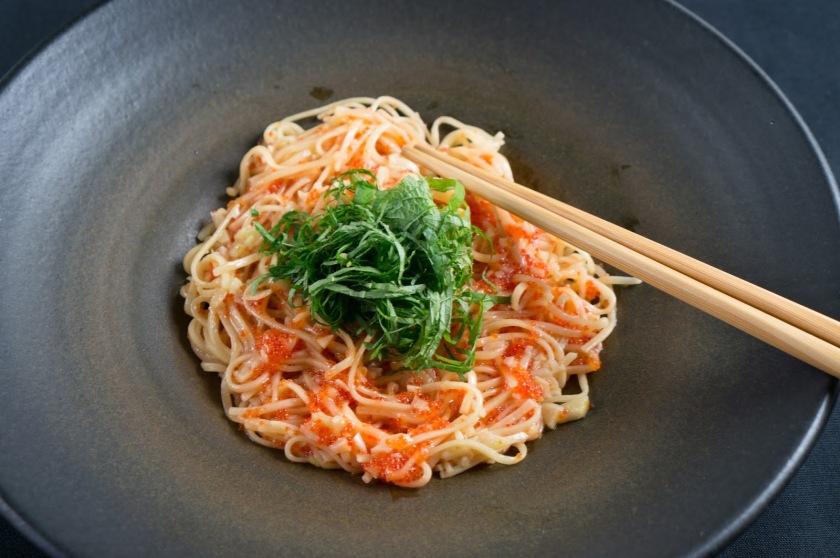Shiso Tobiko (Flying Fish Roe) Spaghetti
This summer, I ate at Basta Pasta in NYC, which is a restaurant that makes pasta the way that it is made by Italian restaurants in Japan. Although many of their dishes are classic Italian, there are a few surprising dishes that top Italian pasta noodles with a mixture of Japanese and Italian ingredients. In other words, it is Japanese-style spaghetti; in Japan this is called wafu pasta or wafu spaghetti since wafu (sometimes also spelled wafuu) means “Japanese-style”. As JustHungry.com explains, this style emerged in the 1970s when “essentially, things that are usually eaten with white rice were mixed into or put on top of spaghetti and other [Italian] pastas”. The resulting flavor combinations are a fun and unexpected mix, which strangely go well together.







